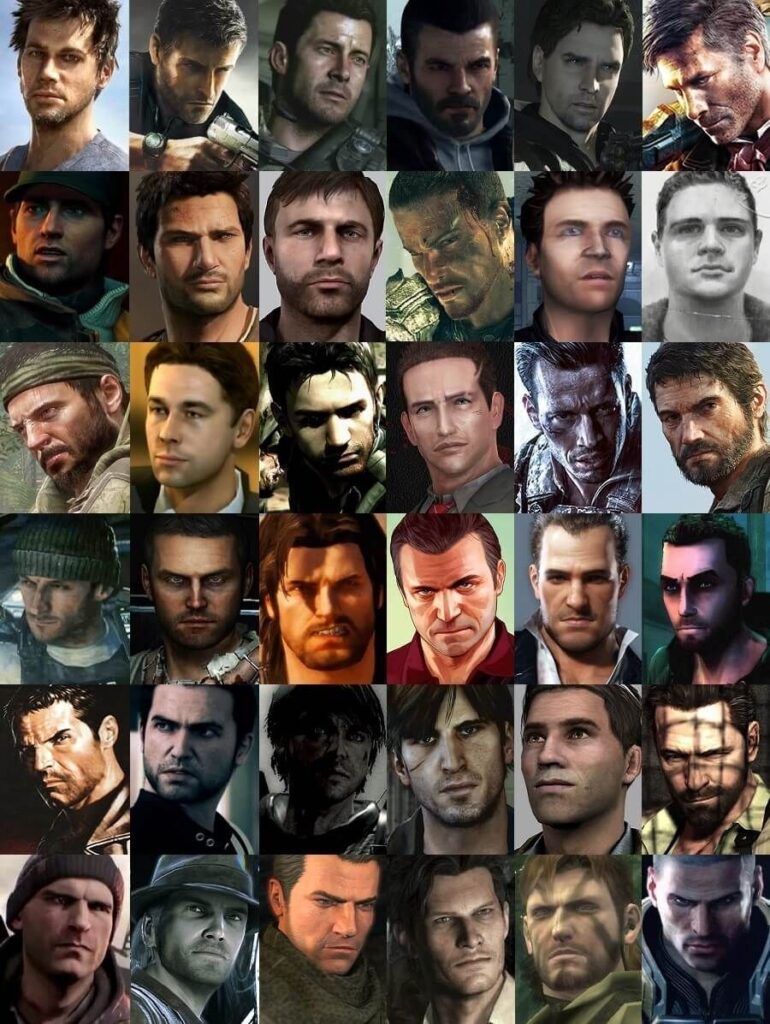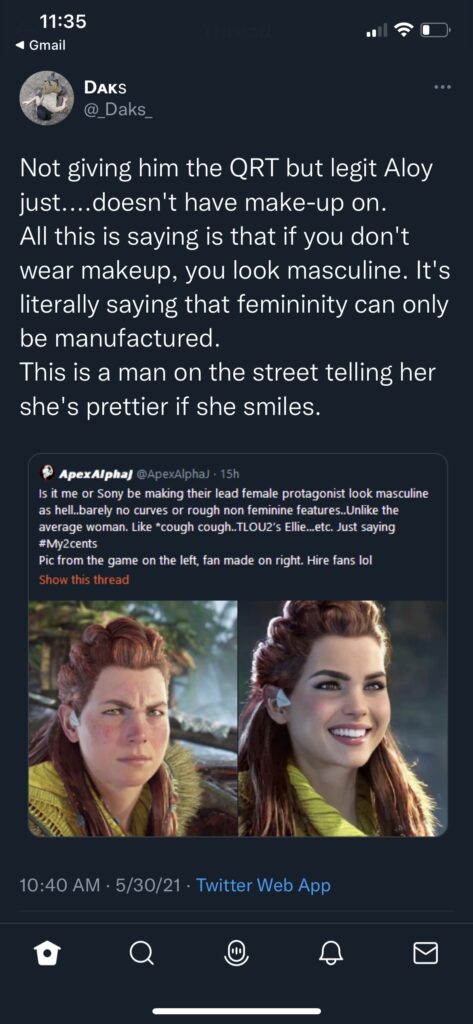By Noah H.
Just like in television and film, the main character in video games is often the white, straight male. There are several video game franchises that have heroic characters that aren’t male or are of different ethnicity, but these sorts of characters are often secondary characters, and rarely see center stage compared to their counterparts.
Over the past decade many video game developers have received criticism from the public about this very issue, and rightfully so. According to a 2021 study of 100 different video game titles, almost 80% of all video game characters are male, with nearly 60% being white. In fact, most of these characters also almost adhere to the Six Themes of Masculinity -— be successful, be aggressive, be self-reliant, transcend (characters don’t always transcend masculinity but there’s usually some form of enlightenment), be sexual and avoid being feminine. This is harmful to gamers because not only does it create this very narrow idea of what it means to be a “hero,” but for those who don’t already fit the mold or push themselves to adhere to it, it can cause extreme self-esteem and identity issues. It’s possible that people who don’t adhere to this hyper-masculine, overly-sexual and peak-physical condition image created by video games are often pushed to the fringes of society. In extreme cases, it can contribute to violence, sexism, homophobia, and other forms of bigotry.
One example of this occurred in 2014, the #Gamergate movement, a slander campaign, saw many anti-feminists harassing female video game developers and feminists online. These movements are especially harmful because one of the only ways to incorporate more diversity in video games starts with having a more diverse cast of employees within these development companies. If employees don’t feel safe in their workplace or are harassed by gamers, it’s only going to set representation in video games backward.
However, a majority of gamers, even those who don’t identify with the white-male main character, often don’t reach such levels of depravity. In fact, as our society has progressed many fans have voiced their concerns to video game developers, urging them to be more inclusive in terms of gender, sexuality and ethnicity.
Unfortunately, even when video game developers decide to step away from the usual heroic, masculine depiction, there is often controversy around it. One of the most ridiculous controversies I’ve seen surrounded the female protagonist of Horizon Zero Dawn and Horizon Forbidden West, Aloy. Aloy was first introduced back in 2017, and since then her two games have received tons of praise and 52 Game of the Year awards. However, when Horizon Forbidden West was announced in 2021, Aloy’s character design saw some backlash from fans, with some saying they would prefer a “prettier” protagonist with more “feminine features.” While it’s reasonable to think that Aloy’s character would receive backlash from some for challenging the heroic masculine stereotype, she was actually critiqued for being overly masculine, and not being “conventionally attractive” (as if a woman in a post-apocalyptic world dominated by robots primary concern is her appearance).
On the other hand, there have been several video game franchises that have had women as the series’ protagonists, one of the most notable is Bayonetta (first appearing in 2009) from the series of the same name. This character does have characteristics usually associated with masculinity, as she is self-reliant, aggressive/solves problems with violence and takes on a leadership role. However, these characteristics come at an expense: Bayonetta is heavily sexualized and is designed to fall in line with western beauty standards.
Some might expect that the team responsible for designing Bayonetta was all men, but to much surprise, she was actually designed by female designer Mari Shimazaki. Nonetheless, video game developer Hideki Kamiya had a large say in the design process, and occasionally shot down some of Shimazaki’s ideas in order to make her more feminine. He actually went on to describe the character as “his ideal woman,” back in a 2009 interview. It is worth noting that some fans believe her sexuality is an important part of her character, and her very sexualized design is actually used to empower and portray the character as an independent. While I don’t think that idea is entirely inaccurate, unrealistic, feminine beauty standards can be just as harmful as masculine stereotypes in video games, and while these kinds of characters bring some diversity into the field, at the end of the day the heavily sexualized protagonists both can be seen as stereotypical and harmful portrayals of women.
Like Bayonetta, most female video game protagonists are heterosexual, but that doesn’t mean there isn’t any LGBTQ+ representation in video games. The Last of Us Part Two (2020), a highly regarded survival-horror game has Ellie as its protagonist, a white lesbian. The face of the 2016 multiplayer game Overwatch, Tracer, is also a white lesbian woman. Another one of Overwatch’s 32 playable characters, Solider 76, is a white, gay man. Again, even though this isn’t the strongest push for diversity (after all, every one of them is white), it at least shines a light on the LGBTQ+ community and shows that members of the community can be heroes despite not adhering to traditional “masculine hero” characteristics.
The last franchise I want to discuss is a personal favorite. For the past 15 years, the historically-inspired RPG series Assassin’s Creed has continually churned out one successful release after another. Many protagonists from the games are European men, but thanks to the pseudo-historical nature of the series, a few male protagonists that are ethnically Native American, Afro-Caribbean and Egyptian have made appearances as the main character in a game or two. The developer of the series, Ubisoft, has repeatedly been pushed by fans to explore other, non-European cultures.
In terms of gender representation, Assassin’s Creed falls short again. Across 29 games, only six have a female protagonist, and in only four of those entries can you play as the female protagonist for the entire game. To add further insult to injury, three of the six female protagonists are white, reinforcing Diamond Lobby’s video game diversity study that found only 8.3% of video games have a non-white female protagonist. While most Assassin’s Creed fans, including myself, would love to play as a more diverse protagonist, based on their historical output, my expectations will remain low.
Overall, even though main characters in video games are overwhelmingly the stereotypical masculine, white males, we are still in an era where video games are more diverse than ever before, both in terms of in-game characters and player bases. This is in spite of the fact we see very few characters that are ethnically non-white, and even fewer characters that are women of color. Not to mention the fact that I couldn’t find a single game where the main character is trans.
As these player bases grow increasingly diverse, there will be more people who desire a game where they can play as someone with who they can relate in some fashion. The sooner we can incorporate more characters who don’t fit the masculine, white male mold, the better. While there’s still much ground to cover, I think in the next few years many people’s perception of what a “hero” character in video games is, will shift away from just the scruffy white guy exhibiting toxic masculine traits. It’s a tried-and-tired trope that not only isn’t an accurate depiction of heroism but can be harmful to gamers who don’t see themselves as fitting that narrative. A far more realistic depiction is that anyone can be a hero, regardless of gender identity, sexuality, race or anything else.


